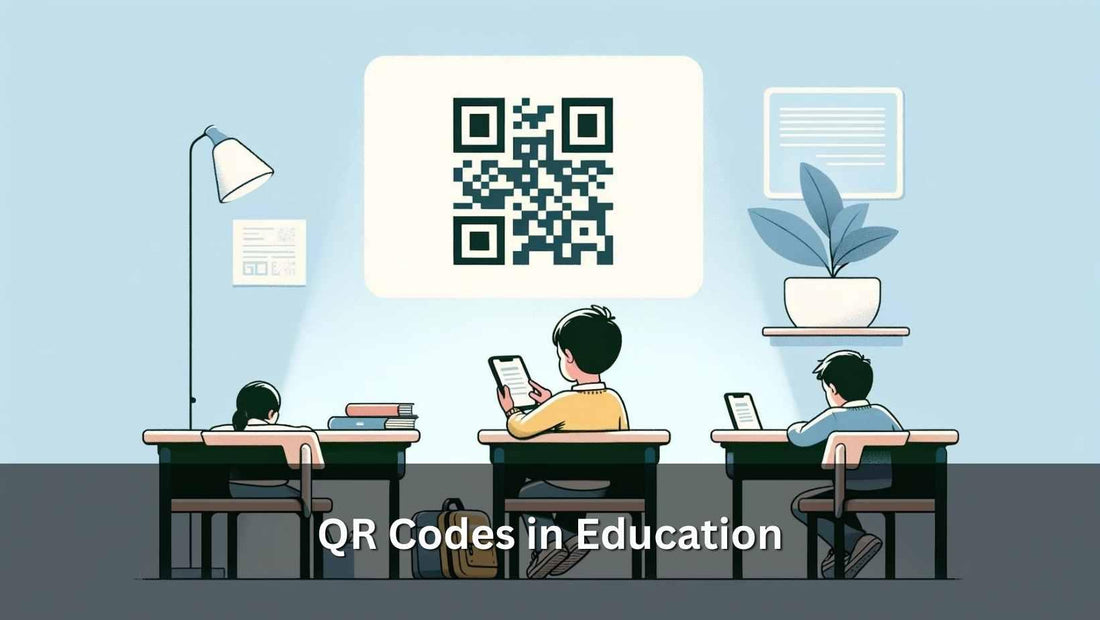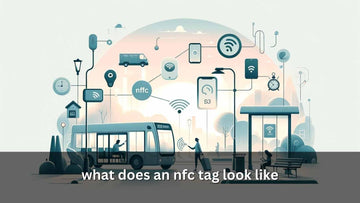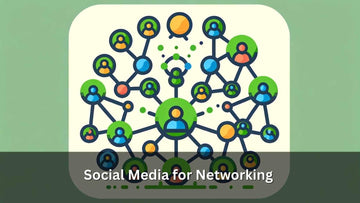Revolutionizing Education: QR Codes in the Classroom

Contents
- 1- Introduction
- 2- Why QR Codes Are Gaining Popularity in Education
- 3- The Advantages of Implementing QR Codes in Learning Environments
- 4- Innovative Ways Teachers Use QR Codes to Engage Students
- 5- 10 Transformative Uses of QR Codes in Education
-
6- 1. Enhancing Textbooks with Digital Content
- 6.1- 2. Unique Student IDs for Personalization and Security
- 6.2- 3. Simplified Attendance Tracking
- 6.3- 4. Streamlining Curriculum Access
- 6.4- 5. Gamifying Learning
- 6.5- 6. Enriching Library Resources
- 6.6- 7. Enhancing Co-curricular Activities
- 6.7- 8. Facilitating Event Participation and Information Sharing
- 6.8- 9. Interactive Learning in Science and Nature
- 6.9- 10. Creating Digital Art Galleries and Projects
- 7- Conclusion
Introduction
The integration of QR codes into educational settings marks a significant leap towards interactive and technology-driven learning. These two-dimensional barcodes have become a versatile tool in classrooms around the globe, offering a bridge between physical materials and digital resources. By simply scanning a QR code with a smartphone or tablet, students gain instant access to a wealth of information, multimedia content, and online activities.
This seamless connection not only enriches the learning experience but also caters to the diverse learning styles and paces of students. As educators continually seek innovative methods to engage students and expand their horizons, QR codes stand out as a powerful ally, transforming traditional educational environments into dynamic, interactive spaces.
Why QR Codes Are Gaining Popularity in Education
QR codes are gaining popularity in education due to their simplicity, cost-effectiveness, and versatility. These compact codes can be easily generated and printed on any material, allowing educators to link to digital resources without the need for expensive technology. They provide a quick and effortless way for students to access videos, articles, interactive activities, and more, enhancing the depth and breadth of their learning experience. Furthermore, QR codes support diverse learning styles, offering visual, auditory, and kinesthetic learners unique ways to engage with content.
The ability to update the linked information without changing the printed QR code also makes them a preferred tool for dynamic curriculum updates. In an era where digital literacy is crucial, integrating QR codes into education seamlessly merges traditional and digital learning, preparing students for a technology-driven world. Their widespread adoption is a testament to their ability to make learning more accessible, engaging, and connected.

The Advantages of Implementing QR Codes in Learning Environments
Implementing QR codes in learning environments offers a myriad of advantages that significantly enhance both teaching and learning experiences. Firstly, QR codes provide instant access to digital resources, making it easier for students to find and utilize supplementary materials. This immediate connection to a wide array of information supports differentiated learning, allowing educators to tailor content to meet diverse student needs and learning styles.
Secondly, QR codes introduce an element of interactivity and engagement into the classroom. By scanning a code, students can embark on virtual field trips, participate in interactive quizzes, or access multimedia presentations, transforming passive learning into an active exploration. This engagement is crucial for fostering a deeper understanding of the subject matter and for keeping students motivated.
Additionally, QR codes streamline classroom management and organization. Educators can use them for a variety of administrative tasks, from tracking attendance with a simple scan to distributing assignments and collecting student work efficiently. This not only saves valuable instructional time but also reduces paper waste, contributing to environmentally friendly classroom practices.
Moreover, QR codes empower students to become independent learners. They encourage curiosity and self-directed exploration, as students can access and investigate additional resources at their own pace. The flexibility and ease of updating QR code content also ensure that students have access to the most current and relevant information, further enriching their learning experience.

Innovative Ways Teachers Use QR Codes to Engage Students
Teachers are increasingly harnessing the power of QR codes to create immersive and engaging learning experiences. One innovative application is transforming worksheets into interactive learning tools. By embedding QR codes that link to instructional videos, animations, or audio explanations, teachers can provide students with instant access to additional learning resources directly related to the task at hand, catering to various learning preferences and enhancing comprehension.
Interactive bulletin boards are another creative use of QR codes in the classroom. These boards can feature codes linked to book trailers, author interviews, or interactive quizzes related to class themes or projects, turning passive hallway displays into dynamic learning opportunities. This not only engages students but also fosters a sense of community as they share discoveries and insights.
To make reading more engaging, teachers can place QR codes in books that link to related content, such as background information, related stories, or discussion questions. This approach enriches the reading experience and encourages deeper exploration of the material.
Incorporating QR codes into school events or open house nights can also enhance parental involvement. Codes can be used to showcase student work, explain classroom projects, or provide parents with quick access to educational resources, helping to bridge the gap between home and school.
Furthermore, QR code scavenger hunts are a fun and active way to learn. Teachers can design hunts around any subject, with each code revealing a clue or question that leads to the next, promoting critical thinking, collaboration, and problem-solving skills in an interactive format. These varied applications illustrate how QR codes can transform educational environments, making learning more interactive, accessible, and enjoyable for students and their families.
10 Transformative Uses of QR Codes in Education
1. Enhancing Textbooks with Digital Content
QR codes in textbooks link to supplementary digital content, such as videos, interactive exercises, and extended readings, enriching the learning material and providing students with a deeper understanding of the subject matter.
2. Unique Student IDs for Personalization and Security
QR codes used as unique student IDs enable personalized learning experiences and secure access to school facilities and digital platforms, ensuring a safer and more customized educational environment for each student.
3. Simplified Attendance Tracking
By scanning QR codes assigned to students, teachers can effortlessly track attendance, significantly simplifying the process and reducing time spent on administrative tasks, allowing more focus on teaching and student engagement.
4. Streamlining Curriculum Access
QR codes provide direct access to the curriculum and educational resources, streamlining the distribution of materials and enabling students to easily retrieve assignments, readings, and supplemental learning tools instantly.
5. Gamifying Learning
Gamifying Learning: QR codes transform educational activities into games, making learning interactive and fun by linking to quizzes, puzzles, and challenges that reinforce curriculum concepts in an engaging way.
6. Enriching Library Resources
Enriching Library Resources: QR codes in libraries link to book reviews, author interviews, and related digital content, enhancing the browsing experience and encouraging exploration beyond the physical book.
7. Enhancing Co-curricular Activities
Enhancing Co-curricular Activities: QR codes connect students to schedules, sign-ups, and information for clubs and sports, enriching co-curricular participation with easy access to resources and updates.
8. Facilitating Event Participation and Information Sharing
Facilitating Event Participation and Information Sharing: QR codes at school events provide instant access to agendas, digital tickets, and additional information, streamlining participation and fostering a community through shared digital content.
9. Interactive Learning in Science and Nature
Interactive Learning in Science and Nature: QR codes in science and nature studies link to virtual labs, species databases, and augmented reality experiences, making learning vivid and interactive.
10. Creating Digital Art Galleries and Projects
Creating Digital Art Galleries and Projects: QR codes turn art projects into digital galleries, allowing students to showcase their work and access peers' creations, fostering creativity and digital literacy.
Conclusion
The integration of QR codes into educational settings signifies a transformative shift towards interactive and accessible learning. By bridging the gap between physical materials and digital resources, QR codes have unlocked a new realm of possibilities, from enriching textbooks with multimedia content to facilitating personalized learning experiences.
Their simplicity, versatility, and cost-effectiveness make them an invaluable tool for educators seeking to engage students in innovative ways. As we look to the future, the potential for QR codes to further revolutionize the classroom is immense, promising continued advancements in how information is delivered and interacted with. This exploration underscores the pivotal role QR codes play in shaping modern education, heralding a future where learning is increasingly dynamic, immersive, and tailored to individual needs.










